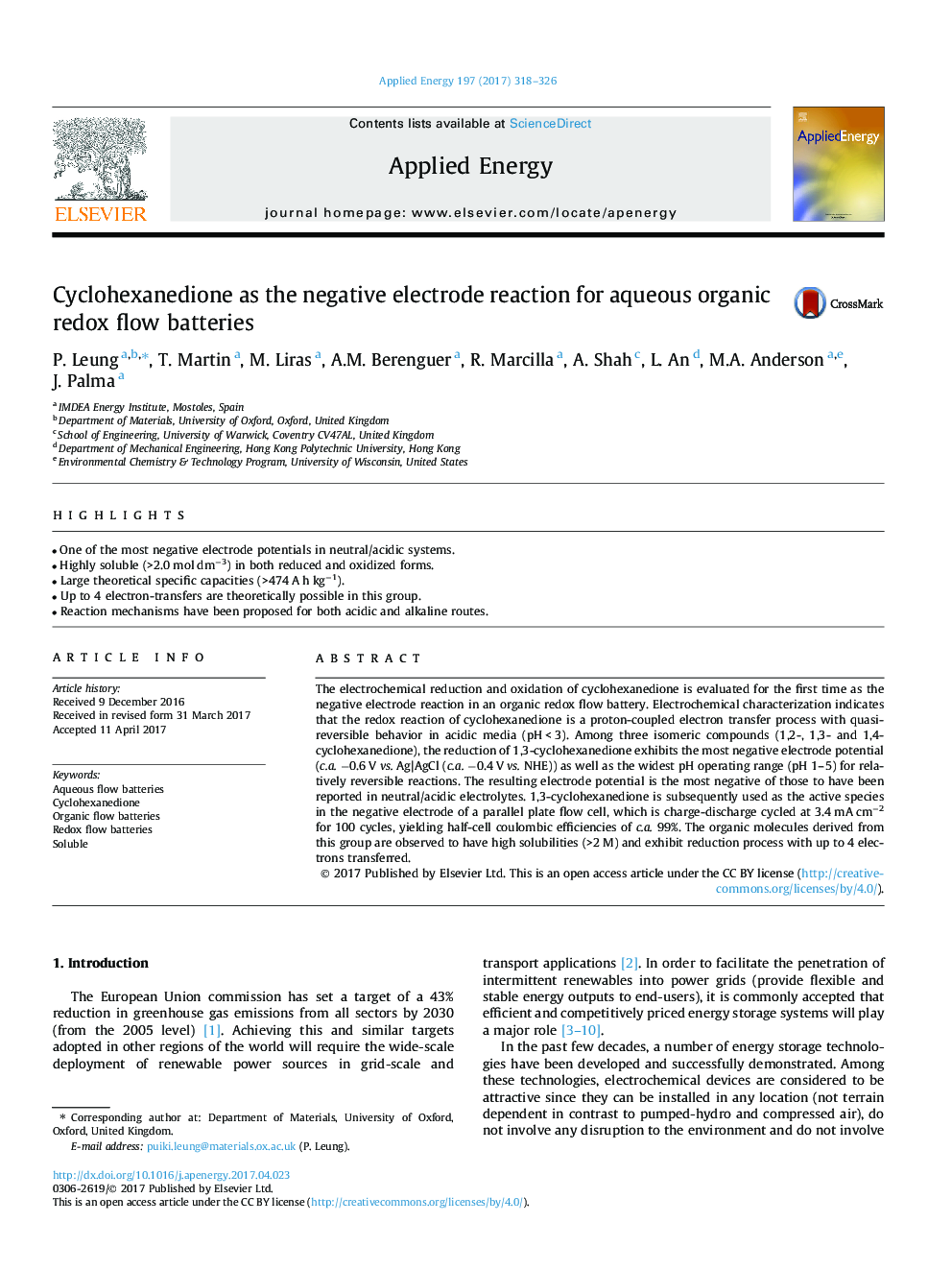| Article ID | Journal | Published Year | Pages | File Type |
|---|---|---|---|---|
| 4916268 | Applied Energy | 2017 | 9 Pages |
Abstract
The electrochemical reduction and oxidation of cyclohexanedione is evaluated for the first time as the negative electrode reaction in an organic redox flow battery. Electrochemical characterization indicates that the redox reaction of cyclohexanedione is a proton-coupled electron transfer process with quasi-reversible behavior in acidic media (pHÂ <Â 3). Among three isomeric compounds (1,2-, 1,3- and 1,4-cyclohexanedione), the reduction of 1,3-cyclohexanedione exhibits the most negative electrode potential (c.a. â0.6Â VÂ vs. Ag|AgCl (c.a. â0.4Â VÂ vs. NHE)) as well as the widest pH operating range (pH 1-5) for relatively reversible reactions. The resulting electrode potential is the most negative of those to have been reported in neutral/acidic electrolytes. 1,3-cyclohexanedione is subsequently used as the active species in the negative electrode of a parallel plate flow cell, which is charge-discharge cycled at 3.4Â mAÂ cmâ2 for 100 cycles, yielding half-cell coulombic efficiencies of c.a. 99%. The organic molecules derived from this group are observed to have high solubilities (>2Â M) and exhibit reduction process with up to 4 electrons transferred.
Related Topics
Physical Sciences and Engineering
Energy
Energy Engineering and Power Technology
Authors
P. Leung, T. Martin, M. Liras, A.M. Berenguer, R. Marcilla, A. Shah, L. An, M.A. Anderson, J. Palma,
